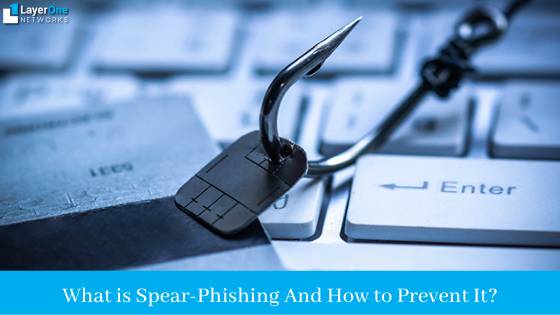Spear-phishing is becoming an increasingly common threat. This is due to increased public reliance on the internet and the growing complexity of technology.
The constantly changing landscape of data security makes it difficult for organizations to institute effective defenses.
In this blog, we’ll look at what spear-phishing is and how you can protect yourself from becoming a victim.
What is Spear-Phishing? and How is it Different From Phishing?
The difference between phishing and spear-phishing is that the attacker makes a general attempt to obtain sensitive information from random people in phishing. In spear-phishing, the attacker makes a particular attempt to get sensitive information from a specific person.
The motive behind spear-phishing is usually an attempt to steal money and disrupt or destroy the victim’s business. In contrast, phishing is more often a random attack designed to steal money.
Spear-phishing scams are more sophisticated in that they are targeted, and attackers use social engineering techniques like spoofing. The attackers use social engineering to get the victim to download a malicious application or email attachment. The application or email attachment downloads gigabytes of malware, which harvests the victim’s passwords, and other personal information.

How Does a Spear-Phishing Attack Happen?
In spear-phishing, the attacker creates a convincing email that appears to be from a trusted source. For example, the phishing email could appear to come from a trusted source such as a bank or a well-known e-commerce company. The email might also contain a link or an attachment. If you click on the link or open the attachment, you could be taken to a website where the attacker has installed malicious software that can capture your information. The captured data could reveal your password, username, and other confidential information.
Spear-phishing can be incredibly dangerous because the attacker can obtain a great deal of information. The attacker can craft a message tailored to the victim by researching the victim, which increases the chances of falling for the attack.
Spear-phishing attacks often appear to come from trusted sources. For example, the phishing email could appear to come from a trusted source such as your bank or a well-known e-commerce company. The email could also contain a link or an attachment. If you click on the link or open the attachment, you could be taken to a website where the attacker has installed malicious software that can steal your information. The stolen information could reveal personal information such as your password, username, or other confidential facts about you.
What Distinguishes Spear-Phishing Emails From Other Emails?
- Phishing emails all contain a subject that relates to the topic that the email is actually about.
- Phishing emails all have a link. Links in emails are the easiest way for hackers to trick you into downloading malware.
- Phishing emails all contain an attachment. The most common attachments are Microsoft Word documents, Excel spreadsheets, and PDFs.
- Phishing emails all look legitimate. They appear as if they came from someone you know.
To avoid spear-phishing attacks, employees should follow these practices:
Never divulge your passwords
Legitimate businesses do not send emails asking for your password. If you receive an email that claims to be from a legitimate business with your username or password as one of the required fields, do not attempt to enter that information on that site. Instead, go directly to the business’ official webpage.
It’s also essential to change your passwords often. Make sure that you use different passwords for different accounts.
Use Two-Factor Authentication
To protect yourself, use a Two-Factor authentication system. This means that you must provide another piece of information that is only known to you personally in addition to your password. Examples of this are a one-time code texted to your cellphone or a one-time pin sent to a landline telephone number.
Read More: An Ultimate Guide on Two-factor Authentication (2FA) for Small Business
Think Twice Before Taking Quick Actions
Hackers thrive on convincing you to take quick action without taking the time to think.
If you receive a threatening email, call the company directly. Be skeptical of any email that asks you to update your information. For example, an email that tells you “you have to update your information by going to www.something.com.” is more than likely a phishing email.
Be aware that some phishing scams are clever. For example, an email may ask you to update your information because there has been a security breach, and that update will cost you money. Contact your credit card company or bank to verify any suspicious activity.
Check the URLs of the webpages
Sometimes the emails from phishers look so legitimate that we click on them.
Hackers can make emails look like they’re from trusted companies such as FedEx, your bank, Amazon or PayPal. If you follow the link, you wind up at a web page that looks similar to a trusted businesses website except that instead of “FedEx.com,” it says, “phisher.com.”
The page asks for your login and password, and if you give them away, the phisher has your information. So make sure to check the URLs from the links you click on before you type in your login information.
Conclusion
There are just a few things you can do to protect yourself against spear-phishing attacks. To know more and prevent these incidents, you need a reliable IT consultant service.
Layer One Networks is an experienced and well-trusted firm providing managed IT and security service in Corpus Christi. You can reach out to our team of IT experts today to get suggestions and guidance on protecting anyone in your organization from spear-phishing attacks.

